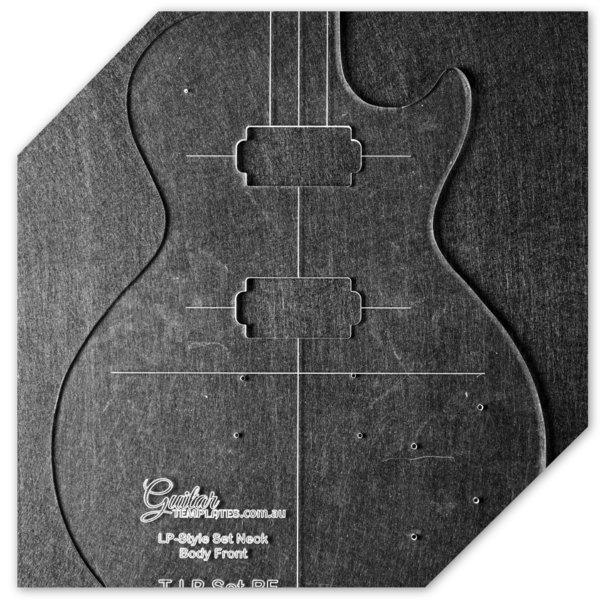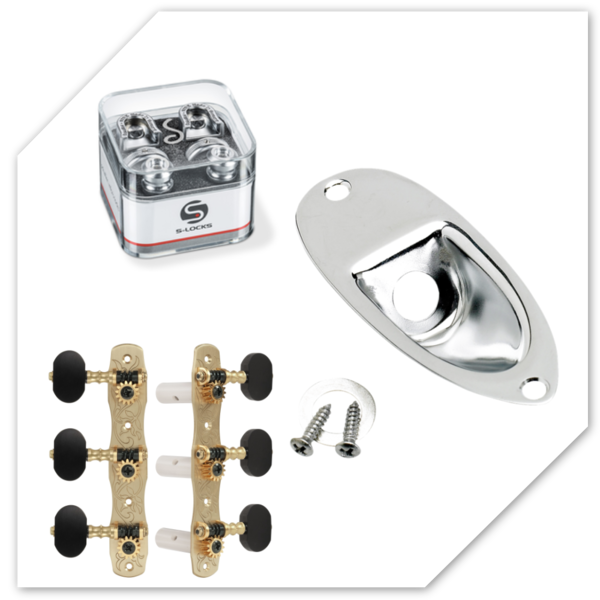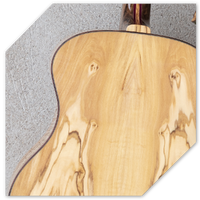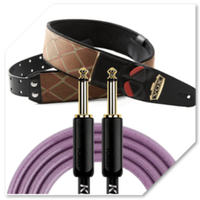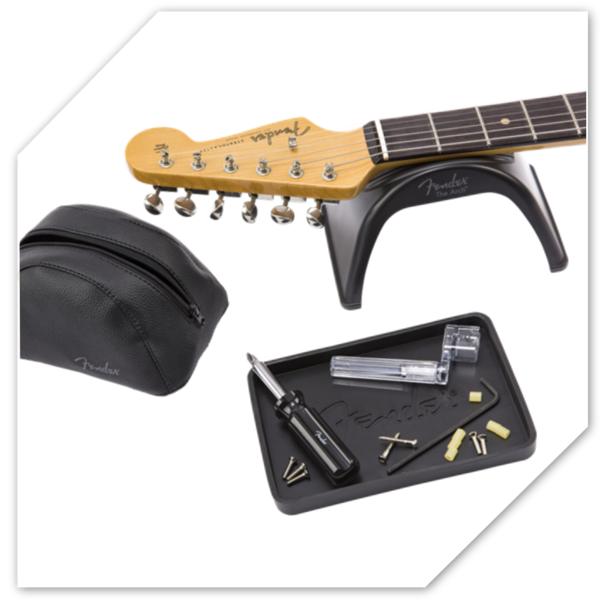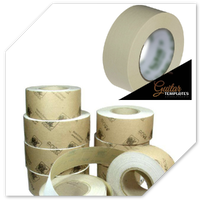Treble Bleed Examples
Treble bleeds can really help your tone on your guitar, essentially it is a circuit that helps feed the highs through (bleed through the highs) as your roll your volume down on your guitar.
There is a lot that can be said about these bleeds and their types but the reality is that your ears will hear sound and have preferred tones versus other people, so, perhaps experimenting with different values may make the most sense. Here are the three most common types and how they can be applied. You should note that whilst you can use large voltage capacitors such as 600v, there is no benefit and in fact that they are likely to be bigger and take up valuable space in your guitars cavity.
Click here to buy Capacitors and Resistors
Type 1 Treble Bleed
This is a capacitor only Treble Bleed

This treble bleed utilises a capacitor only. The image beside shows how to solder the capacitor on, note the left leg is bent back and soldered onto the volume pot.
The capacitor value selected will affect the amount of treble bled through to the signal. This Treble bleeds is the easiest to do and allows for a very little drop in Treble as you roll back the volume pot.
Other Possible Values are listed below, however, the higher you go the brighter it will be. You can try the following values (depending on the capacitor the values may look like on of these 3 types)
- 0.0022uF - 2.2nF or Code 222
- 0.0033uF - 3.3nF or Code 332
- 0.0047uF - 4.7nF or Code 472
- 0.005uf - 5.0nF or Code 502
- 0.0056uF - 5.6nF or Code 562
- 0.0068uF - 6.8nF or Code 682
Type 2 Treble Bleed
This is a Resistor in serial with a capacitor Treble Bleed
This treble bleed utilises a capacitor and a resistor. The image beside shows how to solder the capacitor and resistor together in serial. Note the left leg is bent back and soldered onto the volume pot.
The resistor/capacitor values selected will affect the amount of treble bled through to the signal. This Treble bleed is a bit more complex to join than the first treble bleed but the trick is to use small components such as 1/2 watt resistors and 50v capacitors, this will reduce the size of the electronics to be added and make the task easier to fit in the cavity.
Other Possible Values are listed below with a suggested resistor value, remember, the higher you go, the brighter it will be. You can try the following values
- 0.001uF with either a 100k or 150k Resistor
- 0.0022uF with a 200k Resistor
- 0.0033uF with a 80k Resistor
- 0.0047uF with a 220k Resistor
- 0.0056uF with 300k Resistor
- 0.005uF with 300k Resistor
- 0.0068uF with a 150k Resistor
Type 3 Treble Bleed
This is a Resistor in parallel with a capacitor Treble Bleed
 This treble bleed utilises a capacitor and a resistor. The image beside shows how to solder the capacitor and resistor together in parallel. Note the left leg is bent back and soldered onto the volume pot.
This treble bleed utilises a capacitor and a resistor. The image beside shows how to solder the capacitor and resistor together in parallel. Note the left leg is bent back and soldered onto the volume pot.
The resistor/capacitor values selected will affect the amount of treble bled through to the signal. This Treble bleed is a bit more complex to join than the first treble bleed but the trick is to use small components such as 1/2 watt resistors and 50v capacitors, this will reduce the size of the electronics to be added and make the task easier to fit in the cavity.
Other Possible Values are listed below with a suggested resistor value, remember, the higher you go, the brighter it will be. You can try the following values
- 0.001uF with either a 100k or 150k Resistor
- 0.0022uF with a 200k Resistor
- 0.0033uF with a 80k Resistor
- 0.0047uF with a 220k Resistor
- 0005uF with a 300k Resistor
- 0.0056uF with 300k Resistor
- 0.0068uF with a 150k Resistor

